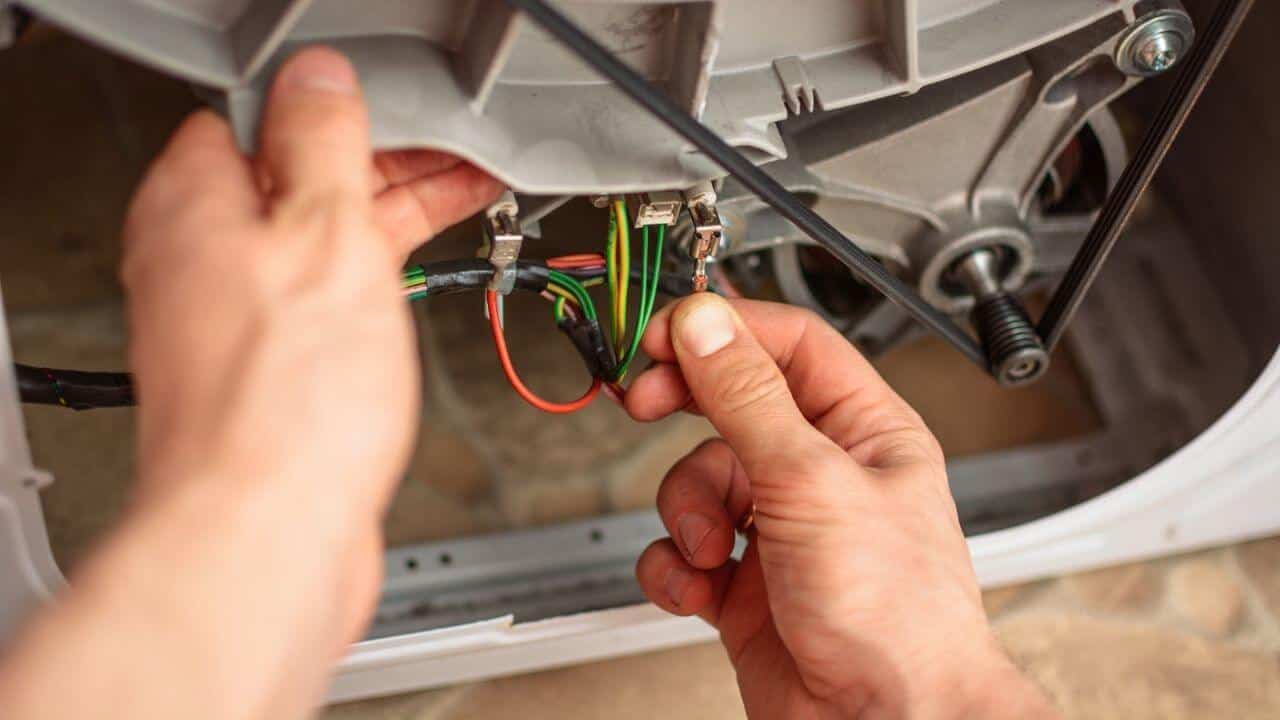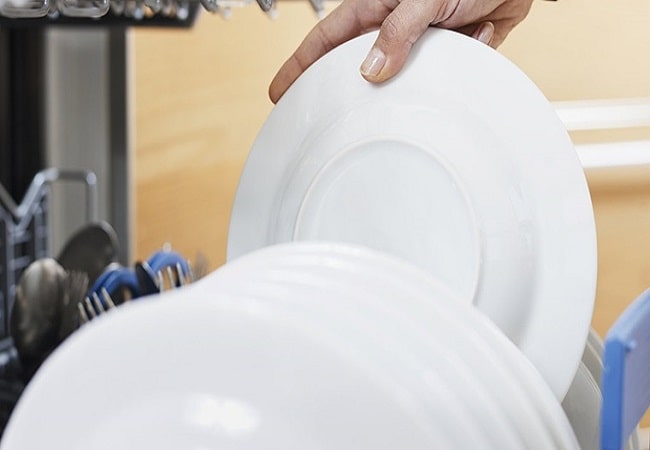Washing machines have evolved into more than just a modern-day convenience. Without a washing machine, you will waste your time and money trying to keep your clothes clean. Technology has helped manufacturers of washing machines create more water-efficient washing machines. If you use your machine a lot, the issue of How to Bypass the Washing Machine Water Level Sensor is likely to come up. While the washing machine sensor may promote efficiency, it can also make it difficult to clean your clothes. Please keep reading to learn about how to bypass washing machine water level sensor.
Contents
- 1 How To Bypass Washing Machine Water Level Sensor?
- 2 FAQ On How To Bypass Washing Machine Water Level Sensor
- 2.1 How Do You Test A Water Level Switch On A Washing Machine?
- 2.2 How Do You Bypass The Pressure Switch On A Washing Machine?
- 2.3 How Do You Fix A Water Level Sensor?
- 2.4 How Does A Water Level Sensor Work In A Washing Machine?
- 2.5 How Do You Reset A Washing Machine Sensor?
- 2.6 Why Does My Washing Machine Not Fill Up All The Way?
- 3 Conclusion
How To Bypass Washing Machine Water Level Sensor?
Modern washing machines have special sensors that measure the water level in your machine and then adjust the cleaning cycle, so you get clean clothes more often.
These sensors work by detecting your laundry load through pressure switches. The pressure switches ultimately control the level of water in your wash bin. The science behind them is amazing. However, its execution gets faulty sometimes. Sometimes, you don’t get enough water for your laundry, bypassing the water level sensors.
When you don’t get enough water for your wash and rinse cycles, your clothes may not be as clean as they should be. It is even worse when they are badly soiled. You may need to wash your clothes repeatedly before they become clean. This is counterproductive and a waste of your time. In the end, it could waste even more water. Here are a few tips to bypass your machine’s water level sensor.
Trick Your Machine
Suppose you have a highly efficient washing machine. In that case, you may notice that it struggles to provide your clothes with enough water levels. Spinning smaller clothes could also be difficult as it requires additional water. If there is too much water for your smaller clothes, your washer may not be appropriately balanced.
Luckily, you can trick the switch. The water level switch increases the water level needed if the load in your tub is bulky. Besides, bulkier clothes could help balance out your washer when spinning. Generally, it would help if you had some bulk to trick your machine.
You can bulk your load by adding a few old towels or light blankets. Choose those whose colors won’t wash off onto others. Another tip for bringing water levels higher is putting your clothes in some water before putting them in the tub. Wet clothes are heavier than dry ones.
With these tips, the density of your clothes will be high, hence triggering the pressure switch to increase water levels.
Adjust The Screw Pressure
A pressure switch acts as the water level switch in the most efficient washing machines. You’ll see it on the control panel. By adjusting the pressure switch, you can increase the water to a level that matches your needs.
First, you’ll need to open the control panel. The pressure switch is right behind the water level switch. Some machines have a second switch for the rinse cycle. As a result, water for the rinse cycle is lower than for the wash cycle.
Do not adjust your washer machine water level switch before ensuring that the drain hose isn’t below the highest water level in the washtub. The hose might siphon water away from your washtub if you aren’t careful.
Bulky/Sheets Setting
Efficient washing machines are great for conserving water but may not be very good at cleaning soiled clothes. When dealing with tough stains, you need to preheat your fabric before washing it. But, there is another trick to washing your dirty clothes further.
First, load your tub with the laundry and put in some fabric softener and detergent. Next, use the deep fill setting to set your water level higher than usual. If this doesn’t work, use the bulky/sheets setting on your machine’s control panel.
The setting is typically used when washing bulky materials and sheets. However, it can help you get a little more water when washing other things. Although this level won’t raise much more water, it can make a significant difference.
Use A Water Hose
This method works if you are willing to get your hands dirty. In addition, it is only suitable for top load washing machines. You’ll need to buy some materials first. They include:
- Plastic hose caps
- A six-foot water hose
- A splitter with a screw in the main channel
Your goal will be to install an alternative water hose. It should help you supply water for your washing, bypassing the pressure system and water level switch.
Start by turning off both the cold and hot taps supplying water to your washing machine. Next, connect your splitter to the hot or cold water supply depending on the temperature you need for your washing cycle. Screw in your splitter and ensure that it fits perfectly.
When you are done, connect your regular wash cycle water to one of the splitter channels. You can then connect your six-foot hose to the other channel. Your hose should go to the washtub.
You can open the six-foot hose with the valve at your splitter when you are done with the connections. Then, when your machine is filled up, you can release the extra water by opening the valve. Although it is a lot of work, your water levels will always be at your desired level.
FAQ On How To Bypass Washing Machine Water Level Sensor
How Do You Test A Water Level Switch On A Washing Machine?
Testing a water level switch on a washing machine can be done by removing the inner cover of the washer and checking the water level sensor. If the water level sensor is broken, it will need to be replaced. If the water level sensor is functional, it may need to be adjusted.
How Do You Bypass The Pressure Switch On A Washing Machine?
A water level sensor is a switch that monitors the water level in a washing machine tub. If the water level falls below a certain point, the sensor will activate a pressure switch to open the spray arm and start the cycle again.
The most common way to bypass a water level sensor is by removing or disabling the sensor. However, this can be risky because it could void your machine’s warranty and render it unusable. Other methods are available if you don’t want to take any risks, such as using an empty washtub to fill up with more water than necessary and triggering the sensor with this excess water.
How Do You Fix A Water Level Sensor?
Water levels in washing machines can be problematic for a few reasons. Suppose the water level sensor is not correctly calibrated. In that case, it may not indicate when the water level in the machine has reached its correct level. Additionally, suppose sediment accumulates over time inside the washing machine’s water tank (caused by wear and tear on the pump or poor maintenance). In that case, this sediment can block light from reaching the water level sensor, resulting in an inaccurate reading. In either case, incorrectly calibrated or blocked water levels can lead to many problems with your machine, including poor performance and potentially dangerous flooding.
To fix a water level sensor problem, you will first need to determine which type of sensor is broken. For models that use mechanical sensors, you will need to remove the machine’s front panel and assess the sensor itself. If the sensor is a dial or lever, you will need to disassemble it to clean and oil it. You will need to access the machine’s motherboard and replace or repair the faulty sensor for electronic water level sensors.
How Does A Water Level Sensor Work In A Washing Machine?
When your washing machine is turned on, the water in the tank is heated up to a specific temperature. This will cause the water level sensor to activate. The sensor monitors how much water is in the tank and sends a signal to the control panel telling it that there’s enough water in the tank for the washing machine to start. If there isn’t enough water in the tank, the control panel will signal the washing machine’s pump to start and fill up the tank with water.
How Do You Reset A Washing Machine Sensor?
The best way to reset a washing machine sensor may vary depending on the make and model of the machine. However, some tips on resetting a washing machine sensor may include unplugging the machine and then plugging it back in or pressing and holding a reset button (if the machine has one).
Why Does My Washing Machine Not Fill Up All The Way?
Many people have problems with their washing machine not filling up. This can be due to various reasons, but one of the most common causes is a water level sensor not working correctly. If your washing machine does not fill up all the way, there are a few things you can do to try and fix the problem. First, you can check to see if water is getting into the machine from other sources. This could include leaks in your plumbing or a broken water line. If there are no other water sources, replacing your washing machine’s water level sensor may be necessary.
Conclusion
If you are a conscious homeowner, you may be interested in highly efficient appliances. For example, you may love your efficient washing machines. But, sometimes, they make it difficult to clean your laundry. With machine water level sensors, the water levels may be too low for you.
While the idea behind these washing machines is laudable, it can be inconvenient. You may be wondering how to bypass the washing machine’s water level sensor. It would be best to enjoy an efficient machine without compromising your convenience with the above tips.





Leave a Reply